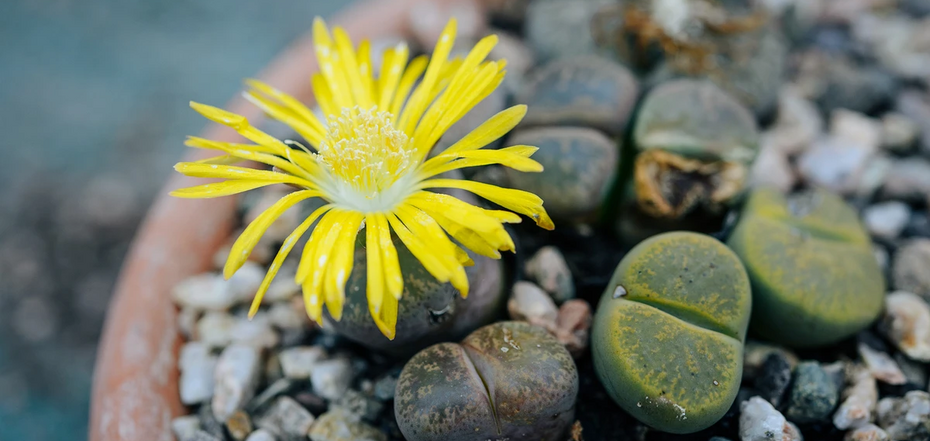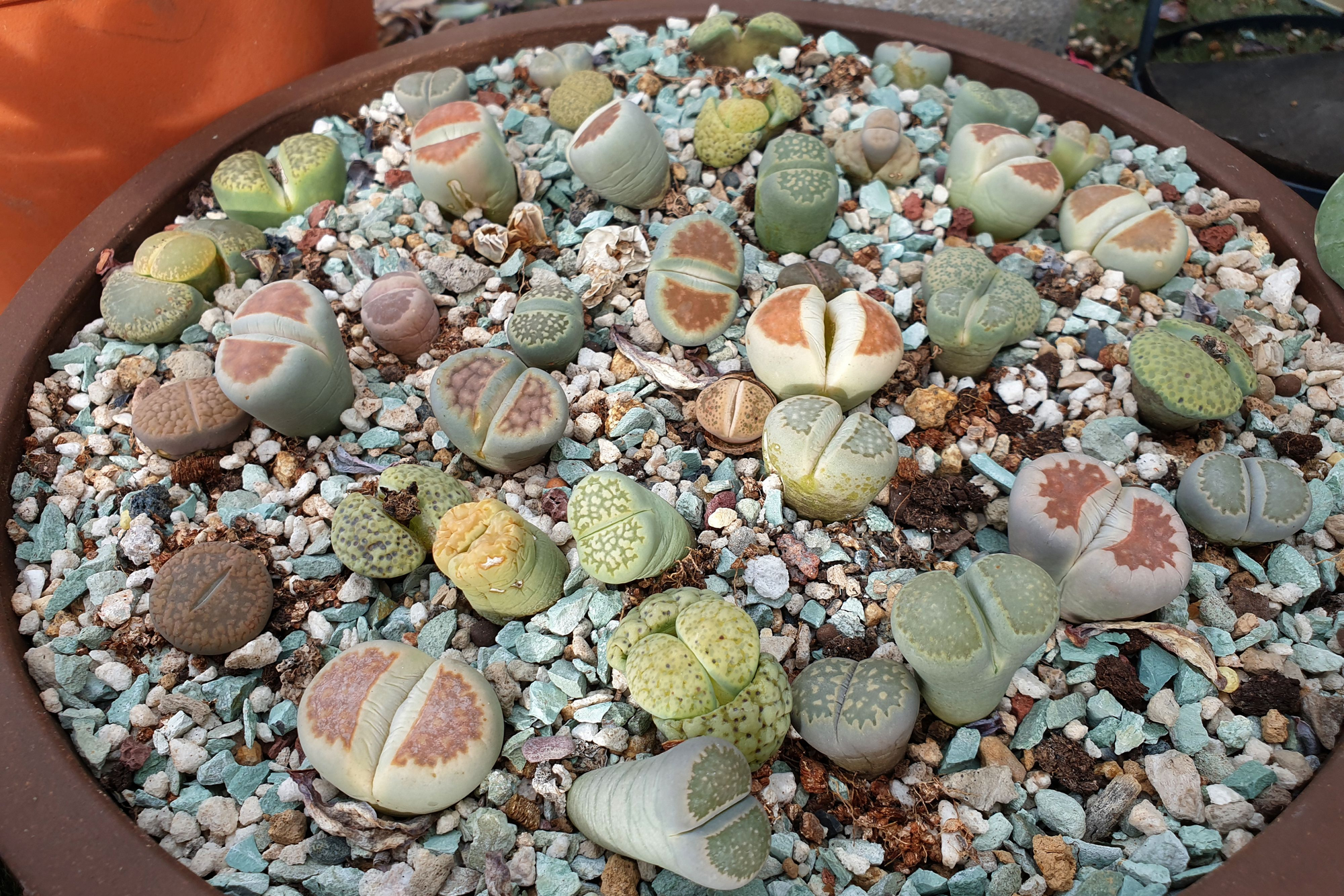News
"Living stones" that will decorate your home: how to grow lithops yourself
Amateurs consider houseplants to be one of the best anti-stress activities. However, it's better to start with easy-to-care-for and interesting plants, such as lithops.
They are also called living stones because such a succulent really resembles a stone, or rather a piece of sea pebble or coral, capable of producing a beautiful bright flower from time to time. OBOZ.UA tells you how to grow and care for lithops.
What are lithops
These succulents come from African countries - Namibia, Botswana and South Africa. Natives of rocky deserts, lithops are not afraid of drought and tolerate both heat and cool equally well.
Since the homeland of these plants is south of the equator, their life cycle is somewhat different from what we, the inhabitants of the Northern Hemisphere, are used to. They have a dormant period in spring and summer, bloom from August to November, and in winter they accumulate strength for the new season.
This plant is small in size - the leaf is 2.5-5 cm in diameter. Lithops blooms with white, yellow and sometimes orange flowers. At the same time, the heads of these flowers are relatively large - they are comparable in size to the body of the plant, and sometimes even grow larger than it.
How to grow lithops from seeds
If you want to try your hand at it, try growing lithops from a seed. It is better to sow it in early spring. Seeds are available in garden centers and on relevant websites.
Soak the seeds in water for a few hours before putting them in the soil, then spread them on succulent sand and cover them with sand. Occasionally spray the seed container with a spray bottle, but make sure that the substrate is only slightly moist. Given good light and a sufficiently high temperature (25 degrees), seedlings can appear in 7-10 days. However, it will take several more months for the plant to get stronger and produce real leaves.
Lithops can be transplanted into a permanent pot when the first pair of leaves is old, dried up and burst. The plant will release young shoots and be ready to move to a permanent pot. Choose a small container and a substrate specially created for cacti. And don't forget about a good layer of drainage. The soil should not retain water.
Caring for lithops
Whether you have grown a "living stone" from a seed or bought a ready-made plant, it needs proper care. Provide the lithops with plenty of light. It is highly desirable that it is exposed to direct rays for 4-5 hours a day. You can also replace them with a phytolamp.
In summer, the plant will do well at room temperature. In the winter months, keep it cool - 10-12 degrees - but not lower than 8.
When the plant is in the growing season, water it once every two weeks with a little water. Spill the soil in the pot, let the excess drain into a sump, and drain it off. It should not stagnate as this can cause the lithops to rot. There is no need to spray the plant. When it enters a dormant state, you can stop watering it as well.
Repotting and fertilizing
Lithops do not need regular transplanting and fertilizing. They should be repotted when you notice that the roots of the plant have filled the entire pot and started to break out of it. Then wait until the period of active growth begins and transfer the plant to a slightly larger container. However, choose a pot that is only 15-20% larger than the previous one and at least 10 cm deep.
The size of the vessel depends on how many plants you are growing together. Lithops do well when placed several at a time.
Carefully remove the plant from the old pot, straighten the taproot so that it does not bend, transfer it to a new container in this state and fill it with soil. At the same time, there should be 2-3 centimeters of drainage at the bottom. It is also better to cover the ground from above. The leaves should rise about two-thirds of their height above the surface.
Propagation
In addition to sowing, lithops can also be propagated from young shoots. Separate such a part from an adult plant and transplant it into fresh soil. While the lithops is taking root, it is best to keep it under a greenhouse.
The plant begins to bloom around the third year of its life. If you want to collect seeds from it, you will have to pollinate the flower yourself with a brush or cotton swab and wait for the seeds to ripen. This will take about 9 months. You can also use the fruits of the plant as a seed.
Subscribe to OBOZ.UA channels on Telegram and Viber to keep up with the latest events.




























